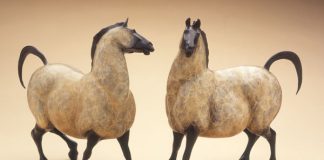“Grass founder” is often associated with lush green spring grass, but fall’s browning grass can be just as dangerous. Sugar, starch and/or fructan—collectively referred to as Non Structural Carbohydrates (NSC) by scientists—can be particularly high in drought-stricken or recently frosted grass, as well as overgrazed pastures. Plants “store” sugar during these stressed times, so fall grass can actually contain more NSCs than lush spring grass.






I am aware of the dangers of the fall grass NSC increase, but have not been able to figure out when the grasses become more safe. Is it after a few days of heavy frost? Not until snow covered? Or is it related to lower daily temperature? I would like to turn my horses out in our hay field after it has been cut, for the late fall and winter turn out. What are the parameters for the NSC in fall grass? I would appreciate a bit more factual information in such an article.
Too true.